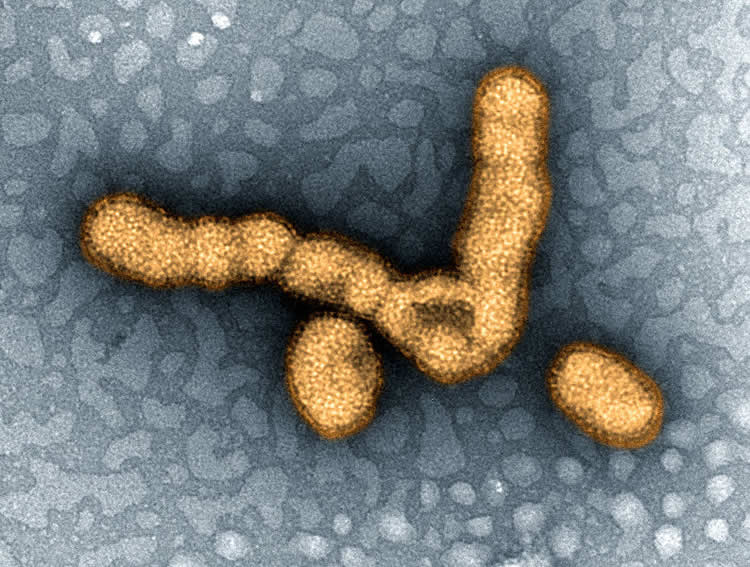Summary: A new study reports mice infected with a flu virus had an increased risk of developing Parkinson’s symptoms. Importantly, mice vaccinated against the flu were less sensitive to MPTP and less likely to develop Parkinson’s like symptoms.
Source: Thomas Jefferson University.
Most cases of Parkinson’s have no known cause, and researchers continue to debate and study possible factors that may contribute to the disease. Research reported in the journal npj Parkinson’s Disease suggests that a certain strain of influenza virus predisposes mice to developing pathologies that mimic those seen in Parkinson’s disease.
“This study has provided more evidence to support the idea that environmental factors, including influenza may be involved in Parkinson’s disease,” says Richard J. Smeyne, Ph.D., Professor of Neuroscience in the Sidney Kimmel Medical College at Thomas Jefferson University and Director of the Jefferson Parkinson’s Disease Center in the Vickie and Jack Farber Institute for Neuroscience. “Here we demonstrate that even mice who fully recover from the H1N1 influenza virus responsible for the previous pandemic (also called ‘swine flu’) are later more susceptible to chemical toxins known to trigger Parkinson’s in the lab.”
Previously, Dr. Smeyne and his collaborator Dr. Stacey Schultz-Cherry in the Department of Infectious Disease at St. Jude Children’s Research Hospital in Memphis, TN, showed that a deadly H5N1 strain of influenza (so-called Bird Flu) that has a high mortality rate (60 percent of those infected died from the disease) was able to infect nerve cells, travel to the brain, and cause inflammation that, the researchers showed, would later result in Parkinson’s-like symptoms in mice. Inflammation in the brain that does not resolve appropriately, such as after traumatic injury to head, has also been linked to Parkinson’s.
Building on that work, the current paper looked at a less lethal strain, the H1N1 “swine flu,” that does not infect neurons, but which, the researchers showed, still caused inflammation in the brain via inflammatory chemicals or cytokines released by immune cells involved in fighting the infection.

Using a model of Parkinson’s disease in which the toxin MPTP, made famous in book “The Case of the Frozen Addicts”, induces Parkinson’s-like symptoms in humans and mice, Dr. Smeyne showed that mice infected with H1N1, even long after the initial infection, had more severe Parkinson’s symptoms than those who had not been infected with the flu. Importantly, when mice were vaccinated against the H1N1, or were given antiviral medications such as Tamiflu at the time of flu infection, the increased sensitivity to MPTP was eliminated.
“The H1N1 virus that we studied belongs to the family of Type A influenzas, which we are exposed to on a yearly basis,” says Dr. Smeyne. “Although the work presented here has yet to be replicated in humans, we believe it provides good reason to investigate this relationship further in light of the simple and potentially powerful impact that seasonal flu vaccination could have on long-term brain health.”
Funding: This project was supported by NIH NS075840, CEIRS NIH contract HHSN27220140006C, and the American Lebanese Syrian Associated Charities (ALSAC). The authors report no conflicts of interest.
Source: Gail Benner – Thomas Jefferson University
Image Source: NeuroscienceNews.com image is credited to the NIH and is in the public domain.
Original Research: Full open access research for “Synergistic effects of influenza and 1-methyl-4-phenyl-1,2,3,6-tetrahydropyridine (MPTP) can be eliminated by the use of influenza therapeutics: experimental evidence for the multi-hit hypothesis” by Shankar Sadasivan, Bridgett Sharp, Stacey Schultz-Cherry & Richard Jay Smeyne in npj Parkinson’s Disease. Published online May 23 2017 doi:10.1038/s41531-017-0019-z
[cbtabs][cbtab title=”MLA”]Thomas Jefferson University “Seasonal Flu Infection May Increase Parkinson’s Risk.” NeuroscienceNews. NeuroscienceNews, 31 May 2017.
<https://neurosciencenews.com/flu-parkinsons-6802/>.[/cbtab][cbtab title=”APA”]Thomas Jefferson University (2017, May 31). Seasonal Flu Infection May Increase Parkinson’s Risk. NeuroscienceNew. Retrieved May 31, 2017 from https://neurosciencenews.com/flu-parkinsons-6802/[/cbtab][cbtab title=”Chicago”]Thomas Jefferson University “Seasonal Flu Infection May Increase Parkinson’s Risk.” https://neurosciencenews.com/flu-parkinsons-6802/ (accessed May 31, 2017).[/cbtab][/cbtabs]
Abstract
Synergistic effects of influenza and 1-methyl-4-phenyl-1,2,3,6-tetrahydropyridine (MPTP) can be eliminated by the use of influenza therapeutics: experimental evidence for the multi-hit hypothesis
Central Nervous System inflammation has been implicated in neurodegenerative disorders including Parkinson’s disease (Ransohoff, Science 353: 777–783, 2016; Kannarkat et al. J. Parkinsons Dis. 3: 493–514, 2013). Here, we examined if the H1N1 influenza virus (Studahl et al. Drugs 73: 131–158, 2013) could synergize with the parkinsonian toxin 1-methyl-4-phenyl-1,2,3,6-tetrahydropyridine (Jackson-Lewis et al. in Mark LeDoux (ed) Movement Disorders: Genetics and Models: 287–306, Elsevier, 2015) to induce a greater microglial activation and loss of substantia nigra pars compacta dopaminergic neurons than either insult alone. H1N1-infected animals administered 1-methyl-4-phenyl-1,2,3,6-tetrahydropyridine exhibit a 20% greater loss of substantia nigra pars compacta dopaminergic neurons than occurs from the additive effects of H1N1 or 1-methyl-4-phenyl-1,2,3,6-tetrahydropyridine alone (p < 0.001). No synergistic effects were found in microglial activation. The synergistic dopaminergic neuron loss is eliminated by influenza vaccination or treatment with oseltamivir carboxylate. This work shows that multiple insults can induce synergistic effects; and even these small changes can be significant as it might allow one to cross a phenotypic disease threshold that would not occur from individual non-interacting exposures. Our observations also have important implications for public health, providing impetus for influenza vaccination or prompt treatment with anti-viral medications upon influenza diagnosis.
“Synergistic effects of influenza and 1-methyl-4-phenyl-1,2,3,6-tetrahydropyridine (MPTP) can be eliminated by the use of influenza therapeutics: experimental evidence for the multi-hit hypothesis” by Shankar Sadasivan, Bridgett Sharp, Stacey Schultz-Cherry & Richard Jay Smeyne in npj Parkinson’s Disease. Published online May 23 2017 doi:10.1038/s41531-017-0019-z






